Masada: The Final Fortress
In the waning months of A.D. 72, a Jewish lookout spied an approaching dust cloud from the top of his mountain outpost. He knew it meant only one thing—the Romans were coming. The alarm was sounded. The final fortress of Jewish resistance sprang to life. The war had come to Masada.
The Stronghold
Masada, possibly meaning “stronghold” or “fortress,” is an imposing mesa located on the southwest shores of the Dead Sea. It is a natural fortification, with sheer cliffs and rugged terrain. On the east, the rock face towers thirteen hundred feet above the surrounding plain. Access is difficult and made possible only through a meandering snake path.
The north and south sides are equally precipitous, but the western approach is somewhat more accommodating. Although the mountain wall still rises 330 feet into the air, a 20-degree slope reaches to within forty-three feet of the summit. Masada’s diamond-shaped, flat top is approximately 1,950 feet long and a thousand feet across at its widest point.
Flavius Josephus, the famous first-century Jewish historian, is the primary source of information regarding Masada’s history. Even though some of his accounts and figures are often questioned, much of what he wrote has been borne out by archaeology.
Masada first became a Jewish fortress under the Hasmoneans (circa 150–76 B.C.). Later King Herod upgraded Masada’s defenses (37–31 B.C.). True to form, Herod’s renovations were impressive. A 4,500-foot-long, double stone wall close to twenty feet high in some places outlined the summit’s perimeter. The 13-foot-wide space between the two walls was separated into numerous rooms used for weapons and living quarters. More than thirty towers ran along the wall, which had four gates.
Herod also built two palaces with lavish amenities, including mosaic floors, frescoes, colonnades, and a swimming pool. Wanting his desert hideout to be self-sufficient, Herod grew his own crops on the mount and collected rain into massive, hewn cisterns capable of holding 1.4 million cubit feet (11.2 million gallons) of water. Storerooms preserved jars of oil, wine, flour, and fruits. Herod also stockpiled enough weapons to outfit ten thousand men.
Following Herod’s death, the Romans stationed a garrison atop Masada, where it remained for almost a hundred years.
The Sicarii
During the census of Quirinius (A.D. 6, cf. Lk. 2:2) a fourth philosophy or sect (others were the Pharisees, Sadducees, and Essenes) arose among the Jews in the land. Josephus blamed this philosophy for the eventual demise of the Jewish Temple in A.D. 70. This sect promulgated rebellion against Rome and allegiance to God alone. Adherents were known as Sicarii, from the Latin sica, meaning “curved dagger.” Some also identify the Sicarii with the Zealots.
Josephus had little good to say about the Sicarii. He called them bandits who not only assassinated Romans but stole from and murdered their own countrymen, committing barbarous acts and fomenting revolt under the ruse of patriotism and freedom.
In A.D. 66 a group of rebels stealthily overran Masada and wiped out the Roman contingent stationed there. Soon after, the Sicarii leader, Menahem, arrived at Masada with his men, raided the armory, and proceeded to Jerusalem as self-appointed leader of the revolt against Rome. Once at Jerusalem, Menahem displayed great cruelty, murdering anyone who resisted his authority. His oppression became so intolerable a number of the Jerusalem Jews, considering his tyranny worse than Rome’s, rose up and executed him. Many of Menahem’s followers, including a relative named Eleazar ben Yair, fled to Masada, where Eleazar became the leader of the Sicarii holed up there.
Over the next six years, the Sicarii on Masada showed fervent religious devotion. However, in stark contrast to their piety, Eleazar and his men often raided surrounding villages, even Jewish ones, to fill their storehouses. Their most nefarious raid was on the village of En-gedi, 15.5 miles north of Masada. The Sicarii attacked during the Feast of Unleavened Bread; robbed the town of foodstuffs; drove out the Jewish inhabitants; and, according to Josephus, killed seven hundred people.
When Jerusalem fell in A.D. 70, a few of the survivors made their way to Masada. By the time the Romans attacked the mountain fortress in late A.D. 72, the Jewish population there had grown to 967.
The Siege
After they took Jerusalem, the Romans began mopping up. Two remaining Jewish strongholds— Herodion and Machaerus—were quickly smashed. Masada was left for the new procurator, Flavius Silva.
Silva marched towards Masada with the Tenth Legion, thousands of auxiliary troops, and thousands of Jewish prisoners to be used as slave labor for hauling food and water.
Upon reaching the foot of the Masada fortress, Silva determined to tackle the daunting task ahead of him. Sizing up the situation, he built eight base camps around the mountain. One was placed on the mountain overlooking Masada from the south. It provided a good vantage point for spying on Sicarii activity. Silva’s headquarters was located in one of the larger camps northwest of the fortress.
Silva’s first objective was to prevent the Sicarii from escaping. He constructed a two-mile-long, six-foot-thick siege wall around the entire mountain.
Silva’s second objective was to break through the wall on Masada’s summit. He knew a protracted siege was out of the question since Masada had abundant provisions. So he built an assault ramp on the natural geological spur that jutted out from Masada’s western side. This job was no small feat. Using two-to three-foot-long tamarisk timbers to support the rubble, Silva’s troops brought in enough dirt and stones to construct an assault ramp that may have been 510 feet long, 50 feet wide, and 26 feet deep.1
The Sicarii were not unaware of Roman intentions, nor did they sit idly by. As the Romans attempted to build their ramp, Jewish defenders rolled huge stones, weighing a hundred pounds each, down on them. Other Sicarii cast smaller stones with slingshots.
But their resistance was to no avail. The ramp eventually was completed. The Romans then rolled their siege engines into action. One tower was 70 to 90 feet high. From that height, the Romans rained arrows and ballistic stones down on the scurrying rebels.
They also used a massive battering ram. A typical Roman battering ram consisted of a huge wooden beam with an iron tip shaped like a ram’s head. Suspended by ropes inside the siege engine, the beam was pulled back by soldiers, then thrust forward with great power. Josephus commented that no wall or tower could withstand such pounding.
Knowing this, the Sicarii reinforced their outer stone wall with an ingenious device. Using the beams from the ceilings of 90 percent of the buildings on Masada, the Sicarii built another double wall of wood, with earthen fill in between. It “could have been 70 to 80 feet long, about 60 feet wide and 24 to 27 feet high.”2 Apparently the battering ram had little effect on this type of wall, other than actually compacting the dirt fill even more with each strike. The success of this new wooden wall was short-lived, however, for it had one major weakness: It could burn.
Silva ordered his troops to throw torches on it. Soon it was ablaze. When a north wind suddenly blew the fire back onto the Romans, the Jewish defenders felt a surge of hope. But the wind changed again, driving the flame back onto the wall. As the wall burned ferociously, the Sicarii realized the end was near.
The Suicide
Instead of charging in for the kill, the Roman legionnaires returned to their camps for the night, looking forward to the final attack on the morrow. During the night, however, Eleazar ben Yair convinced his compatriots, though with some difficulty, that it was better to die free than suffer the Roman torture that was sure to come upon them and their families. Mass suicide was preferred to slavery. With great sorrow, each man took the lives of his own wife and children. Ten men were then chosen by lot to execute the remaining males. Of those ten, one was selected to slay the other nine, burn the palace where they had all fallen, and kill himself.
At morning light, Roman troops poured through the broken wall only to be met with complete silence. Puzzled, they let out a shout, expecting a combative response. Instead, two women and five children appeared, having escaped the night’s slaughter by hiding in underground caverns. They recounted to the Romans what the Sicarii had done. The Romans could not believe it until they entered the burning palace and saw the heap of bodies.
The deaths occurred on the fifteenth of the Jewish month Nisan, the first day of the Feast of Unleavened Bread, A.D. 73.3
Today the modern State of Israel—the only true democracy in the Middle East—memorializes Masada, not necessarily for its defenders but for its ideals. The words of the Israeli national anthem express the yearning in the heart of every Jewish person since the Romans breached Masada’s wall—“To live in freedom in the land of Zion and Jerusalem.”
ENDNOTES
- Dan Gill, “It’s a Natural: Masada Ramp Was Not a Roman Engineering Miracle,” Biblical Archaeology Review 27, no. 4 (2001): 30.
- Ehud Netzer, “The Last Days and Hours at Masada,” Biblical Archaeology Review 17, no. 6 (1991): 23.
- Some believe this traditional date is wrong and claim the date is A.D. 74. See Hershel Shanks, “Masada: The Yigael Yadin Excavations 1963–1965, Final Reports,” Biblical Archaeology Review 23, no. 1 (1997): 62; Shaye J. D. Cohen, “Masada: Literary Tradition, Archaeological Remains, and the Credibility of Josephus,” Journal of Jewish Studies 23 (Spring–Autumn 1982): 401; The New Encyclopedia of Archaeological Excavations in the Holy Land, 1993, s.v. “Masada.”
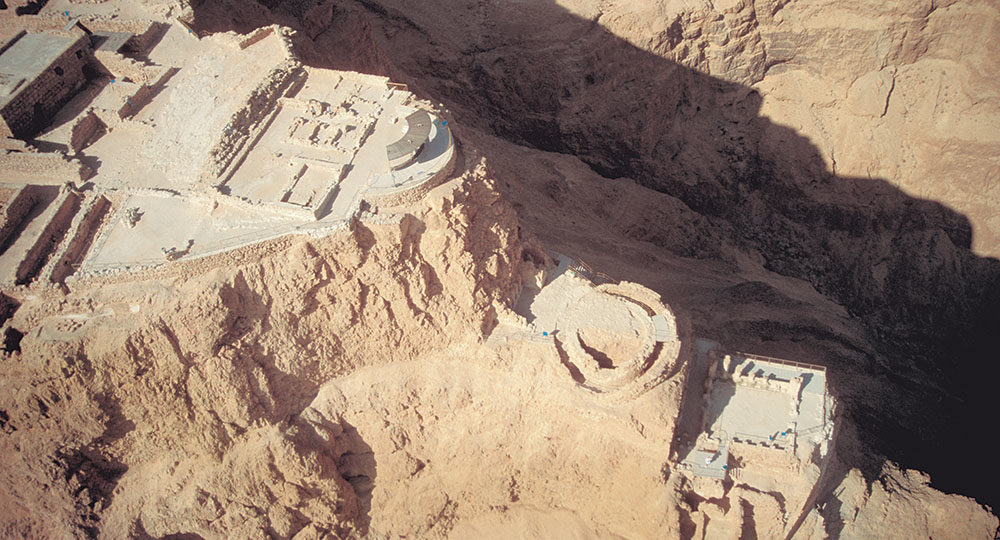
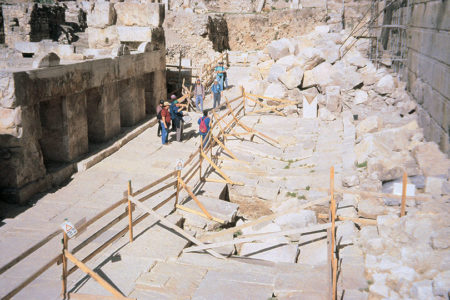
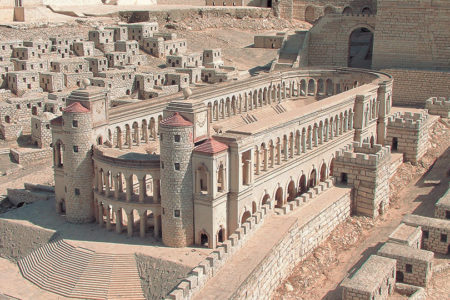

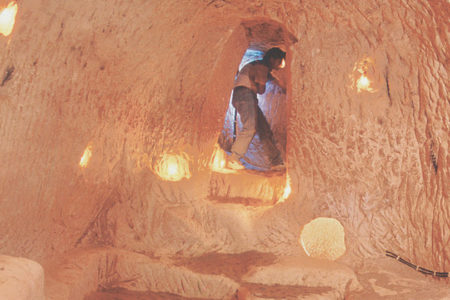
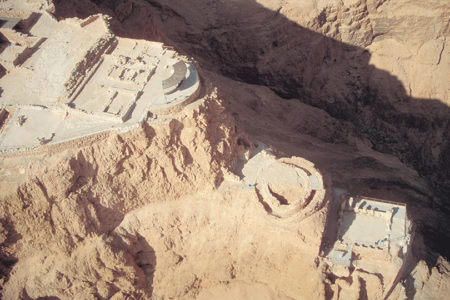

1 thought on “Masada: The Final Fortress”